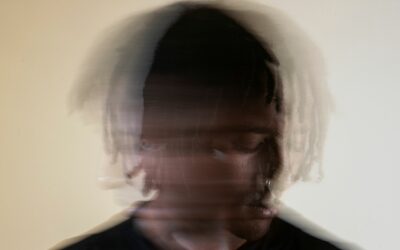By Cæcilie Liv Carlsen
What can art and art therapy contribute to working with clients who have experienced violence?
Being a victim of violence is often associated with the experience of being broken. The connection to yourself, your courage and your way of thinking is often damaged by the traumatic event and needs to be rebuilt. Who was I in the world, how did I orient myself, what did I stand for? All the basics of being human need to be rebuilt and healed.
Art therapy can help victims of violence move on. This form of therapy helps to identify challenges as well as your own resources, strengths and visions. Art therapy lets art, imagination and play pave the way to relief, hope and meaning.
There are different types of violence and what you define as violence. It can be psychological or physical violence. However, there are certain commonalities between people who have been abused in one way or another.
For victims of violence, it can be a huge burden to face up to what happened, often repressing it in order to move on. But it doesn’t always work. In addition, because traumatic events are processed under extreme strain and stress, they are not always properly ‘archived’ together or remembered as a coherent narrative. The victim sometimes experiences mental health problems that don’t go away, such as low self-esteem, depression, PTSD or anxiety.
Creative expression can help victims of violence to process painful memories and put words to the unspeakable and find a new narrative. Compared to regular talk therapy, art therapy incorporates dance, music, poetry, drama and/or visual art as part of the therapy process. A key point is that art and artistic expression offer a unique space to express what can’t always be expressed in words.
When art therapy takes place in groups, the sense of community can provide a sense of safety and belonging, and group therapy can help you feel that what you’re going through is something others can relate to.
After an assault, for example, the victim can find strength in not feeling alone with what happened.
Others may find it difficult to be in the company of another person in an enclosed space. An alternative is to listen to a piece of music while the other person listens via a speaker outside the room. In this way, they share a musical experience that they can then process together with the art therapist in an open space.
Exercises can also be:
- mirroring each other’s movements in dance
- building a shared sculpture without words about what happened
- making sounds with different instruments that bring peace
- building a costume about your future wishes
- paint a picture of peace
- draw a self-portrait of the damaged self-image and the healthy one
From here, you can optionally put into words what the artistic expression can possibly say. For example, the dialog can begin by talking to the voice of art from its point of view. If the artwork could give me advice on how to get more peace in my life, what would it mean if it had a voice?
If the artwork has a name, what is it? For example, if I’m making a collage with a group of people, I ask people to come up with a common title and then the task is to come up with a number of themes that they can work on. It could be ‘heart of the community’, ‘strength of the earth’, ‘revenge and redemption’. In this way, you can express things, needs, sorrows through art and relate to them more easily.
To know more about art therapy and victims of violence go to the example in Artmentum video episode 3 with Professor Melinda Ashley Meyer Demott https://www.artmentum.dk/courses/base-course/. Here, she explains her work with torture victims in Norway and how creative exercises have helped participants regain their bodies, courage and desire to continue living.
Read the Artmentum article about Melinda Ashley Meyer and her program and teaching focusing on victims of violence here:



